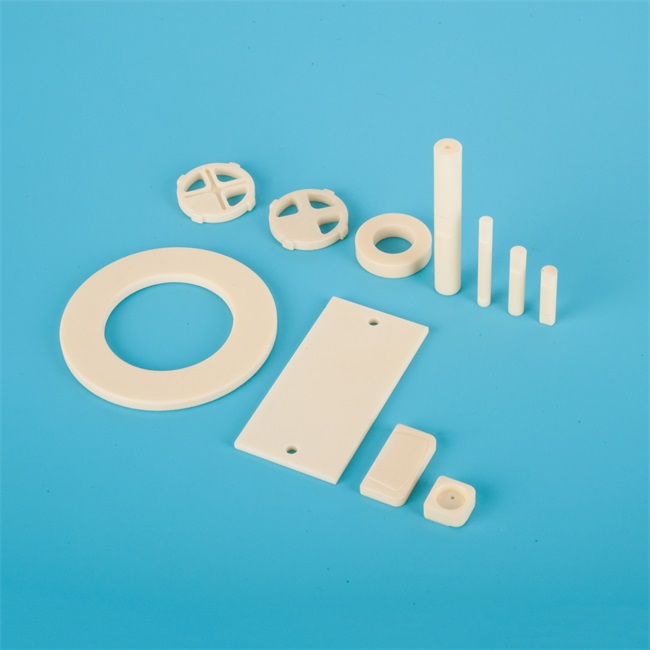The Application of Alumina Ceramic Valve Plates in Petrochemical Pumps
Alumina ceramic valve disc is a high-performance ceramic material product that has been widely used in petrochemical pumps due to its excellent physical and chemical properties.

- Corrosion resistance performance
In petrochemical production, pump and valve systems often come into contact with highly corrosive media, such as strong acid and alkali solutions such as sulfuric acid, hydrochloric acid, sodium hydroxide, as well as sulfur-containing crude oil. Aluminum oxide ceramic valve plates have extremely high chemical stability and can resist the erosion of strong acids, alkalis, and organic solvents, effectively avoiding the risk of leakage caused by corrosion and ensuring production safety. For example, after a certain refinery adopted alumina ceramic valve plates, the leakage rate of the sulfuric acid transportation system decreased by 90%, and the annual maintenance cost decreased by 40%. - Wear resistance performance
When transporting media containing solid particles such as crude oil or catalyst particles containing sand, mud, etc., the internal parts of petrochemical pumps are prone to wear and tear. The Mohs hardness of alumina ceramic valve plates is as high as 9, second only to diamond, which can effectively resist the erosion and wear of particles, and the service life is 2-4 times that of traditional metal valve plates. In crude oil extraction and transportation, alumina ceramic valve plates can significantly extend equipment life and reduce downtime replacement frequency. - High temperature resistance performance
In the refining units of petrochemicals, the temperature often reaches several hundred degrees Celsius. The aluminum oxide ceramic valve plate can withstand temperatures up to 1600 ℃ and maintain stable physical and chemical properties even in high temperature environments, avoiding sealing failure caused by thermal expansion. This high temperature resistance makes it very suitable for high-temperature processes such as catalytic cracking and hydroprocessing. - Sealing performance
The surface of the alumina ceramic valve plate has undergone high-precision grinding treatment, with extremely high surface smoothness, which can tightly adhere to the valve seat and form a good sealing effect. Even under high pressure differential conditions, it can effectively prevent medium leakage and ensure that the sealing performance of the valve is always stable and reliable. In addition, its low friction coefficient makes the valve smoother to open and close, with less operating force. - Typical application scenarios
-Refining unit: In processes such as catalytic cracking and hydroprocessing, alumina ceramic valve plates are used to control the flow of high-temperature oil and gas and corrosive catalysts, improving reaction efficiency.
-Crude oil transportation system: In the oil pumping process containing sand, gravel, and mud, the high wear resistance of alumina ceramic valve plates significantly extends equipment life and reduces maintenance costs.
-Acid washing and waste gas treatment: When treating waste liquids containing sulfuric acid and hydrochloric acid, alumina ceramic valve plates avoid medium pollution caused by corrosion and meet environmental protection requirements. - Economic benefits
Although the initial cost of alumina ceramic valve plates is higher than that of traditional metal valve plates, their cost advantage is significant throughout their entire lifecycle. Its wear-resistant and corrosion-resistant properties reduce replacement frequency and extend maintenance cycles by more than 50%. At the same time, high reliability avoids unplanned downtime and ensures production continuity. In addition, its low friction coefficient can also reduce energy consumption, which is in line with the trend of green production.

Alumina ceramic valve plates have become a benchmark solution in the field of petrochemical pumps due to their core advantages of corrosion resistance, wear resistance, and high temperature resistance. Whether in refining, chemical production or environmental treatment, its excellent performance and economic benefits have been verified through practice.
Tags: corrosion-resistant
PREVIOUS:What are the uses of alumina ceramic valve plates in medical devices
CATEGORIES
LATEST NEWS
- Petrochemical ceramic injec...
- Zirconia Ceramic Rod Custom...
- High-temperature resistance...
- What is the wear resistance...
- What is the hardness of cer...
- Aluminum oxide ceramic cust...
- What are the main aspects o...
- What are the mechanical pro...
- Thermal properties of zirco...
- What properties should be c...
